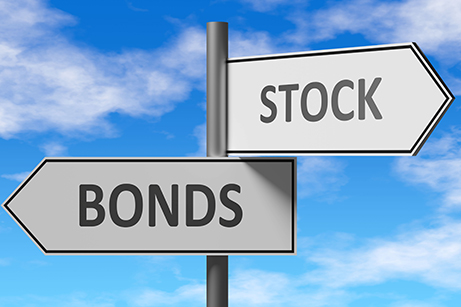Understanding the Difference Between Stocks and Bonds
Investing is an important part of personal finance, and two of the most common investment options are stocks and bonds. While both can be valuable additions to your portfolio, they serve different purposes and come with distinct characteristics. Let’s take a look at the differences between stocks and bonds so you can make informed investment decisions for your portfolio.
What are stocks?
Stocks represent ownership shares in a publicly traded company. When you purchase stocks, you become a shareholder, which means you now own a piece of that company. Shareholders typically have voting rights and may receive dividends if the company distributes profits to its investors.
Key characteristics of stocks:
- Ownership. Buying stocks means owning a piece of the company’s assets and future earnings. A credit union, as a cooperatively owned entity, operates in a very similar way.
- Risk and reward. Stocks offer the potential for higher returns but come with greater risk due to price volatility.
- Dividends. Some stocks pay dividends, which are a portion of the company’s profits distributed to shareholders. Not all stocks offer dividends, and dividend amounts vary.
- Capital gains. Investors profit from stocks through capital gains, which occur when the stock’s price increases from the time of purchase.
- Market fluctuations. Stock prices fluctuate daily based on factors like company performance, global and national economic conditions and market sentiment.
- Long-term growth. Stocks are generally considered long-term investments, with the potential for significant growth over time.
What are bonds?
Bonds are debt securities issued by governments, corporations or other entities. When you purchase a bond, you’re essentially lending money to the issuer in exchange for periodic interest payments and the return of the bond’s face value at maturity. A bond offers security and a safe, stable investment.
Key characteristics of bonds:
- Debt obligation. Bonds represent a debt obligation of the issuer to repay the bond’s face value (principal) to the bondholder at maturity.
- Fixed interest payments. Bondholders receive regular interest payments, known as coupon payments, throughout the bond’s term.
- Maturity date. Bonds have a specific maturity date when the principal is repaid in full. This can range from a few months to several decades.
- Lower risk. Bonds are generally considered lower-risk investments due to their fixed income stream and principal repayment at maturity.
- Income stream. Bonds provide a predictable income stream, making them the perfect choice for income-focused investors.
- Interest rate sensitivity. Bond prices are inversely related to interest rates. When interest rates rise, bond prices tend to fall, and vice versa.
Stocks or bonds?
Stocks and bonds can both be great investment options.
- Stocks offer the potential for higher returns over the long term, but also come with greater risk of loss. Stock values can fluctuate daily, and following a stock’s rise and fall can be stressful for the investor. However, stocks can be a fabulous choice for a long-term investor possessing a high-risk tolerance.
- Bonds, on the other hand, offer a secure investment and ongoing income stream. They can serve various investment horizons, including short-term, medium-term and long-term goals, depending on the bond’s maturity. Bonds can be an excellent choice for the risk-averse investor who is seeking to grow their money in a safe, dependable fashion.
- Both stocks and bonds have a place in a well-balanced investment portfolio. The allocation between the two depends on your financial goals, risk tolerance and investment horizon. To find the perfect balance between stocks and bonds, you may want to seek the advice of a financial advisor.
- Understanding the differences between stocks and bonds is crucial for building a well-rounded investment strategy. Use this guide to make an informed decision for your investments.








